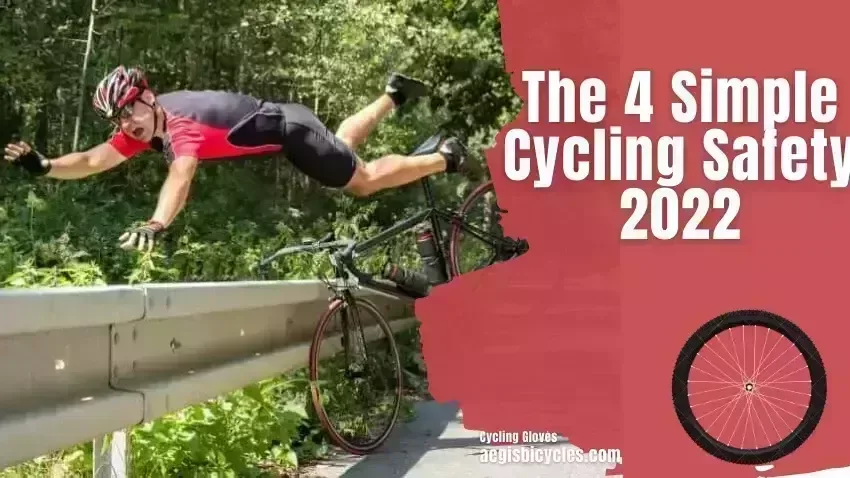Cycling Safety: Cycling, whether for transportation, recreation, sports, or exercise, is common in all parts of the world. Not only do you need to make sure that your bicycle is safe when you leave it by itself (a bicycle U-lock may help), but you must also keep yourself safe as injuries can happen when safety is not practiced. From minor cuts and bruises to more serious injuries (and even death), the possibility of experiencing these hazardous ordeals can be minimized by making safety a priority.
Here are some simple safety tips that you can follow:
Cycling Safety Tips
- Wear a helmet. This is the most important safety measure for cyclists of all ages and experience levels.
- Obey traffic laws and ride defensively. Cyclists are considered vehicles under the law and are subject to all the same rules as cars, trucks, and motorcycles.
- Use hand signals when turning or stopping.
- Be visible. Wear bright clothing during the day and reflective gear at night. Use front and rear lights when riding in low-light conditions.
- Avoid riding in bad weather conditions. Wet roads can be slippery and increased traffic can make visibility more difficult.
- Watch for road hazards. Be on the lookout for potholes, debris, glass, and other hazards that can cause a crash.
- Ride in the direction of traffic.
- Don’t ride while under the influence of drugs or alcohol.
- Know your bicycle. Make sure your bike is the right size and in good working condition.
- Plan your route before you ride. Choose routes that are safe and avoid high-traffic areas if possible.
Wear a helmet to protect your head

The most common injury that a cyclist sustains is a head injury, so protecting it is the most important thing. Always wear a helmet that is fitted for your head so that it will not slip forward or backward. It is proven that a well-fitted helmet will protect a cyclist from traumatic head injuries 85–88% of the time.
Always encourage your children to wear their helmets and help them to make it a fashion statement (bright colors and attractive designs will increase their visibility). Make sure the fit is right by using the extra padding that comes with the helmet to get a better fit for them.
Be aware of your surroundings
Always be aware of your surroundings while cycling. Treat it as a defensive move against any potential accidents and injuries. Be reminded of these things:
- Look out for and avoid any obstacles that can make you fall, like potholes, cracked pavement or wet leaves. Before you try going around these obstacles, always look out for other cyclists or motorists and see if there is any space for you to maneuver yourself away from the obstacle.
- Never cycle with headphones on – it will make you unaware of surrounding vehicles and traffic.
- Be cautious when you’re cycling after wet weather or through snow or ice, as the ground may be slippery. Ride slow to avoid any slips and to allow time to stop.
Make yourself seen
Take the responsibility of making yourself seen by others around you. As I pointed out before, bright colors and attractive designs on your child’s helmet can help motorists see them better. You can also do that by wearing light-colored or fluorescent-colored clothes.
You should also install light reflectors on both ends of your bicycle. Make sure that if you have a carrier, you place the rear reflector at a visible angle.
Also, avoid riding at night. If you need to, incorporate all of the above as best as you can.
Ride like a driver
Do not assume that just because bicycles are smaller than motor vehicles, that cyclists should not obey traffic laws. To ensure your safety, always assume that you are a driver who needs to obey all traffic rules and regulations. These are some important points that you should practice:
- Always ride with the flow of the traffic, not against it. All traffic lights and signs are needed by all motor vehicles.
- It is expected that cyclists ride on the right side of the road with motorists.
- When making turns, do not forget to signal. Letting others know where you’re heading can help ensure that accidents do not occur.
- Always look at the road behind you to monitor your surroundings, just as you would look left and right before crossing.
- Give way to pedestrians and other vehicles where and when it is appropriate.
Conclusion
And at the end of the article, we would like to share with you the 4 Simple Cycling Safety Tips:
1. Always wear a helmet when cycling.
2. Make sure your bike is in good working condition.
3. Be aware of your surroundings while cycling.
4. Follow the rules of the road.
We hope that by following these simple tips, you will be able to enjoy cycling while staying safe!
